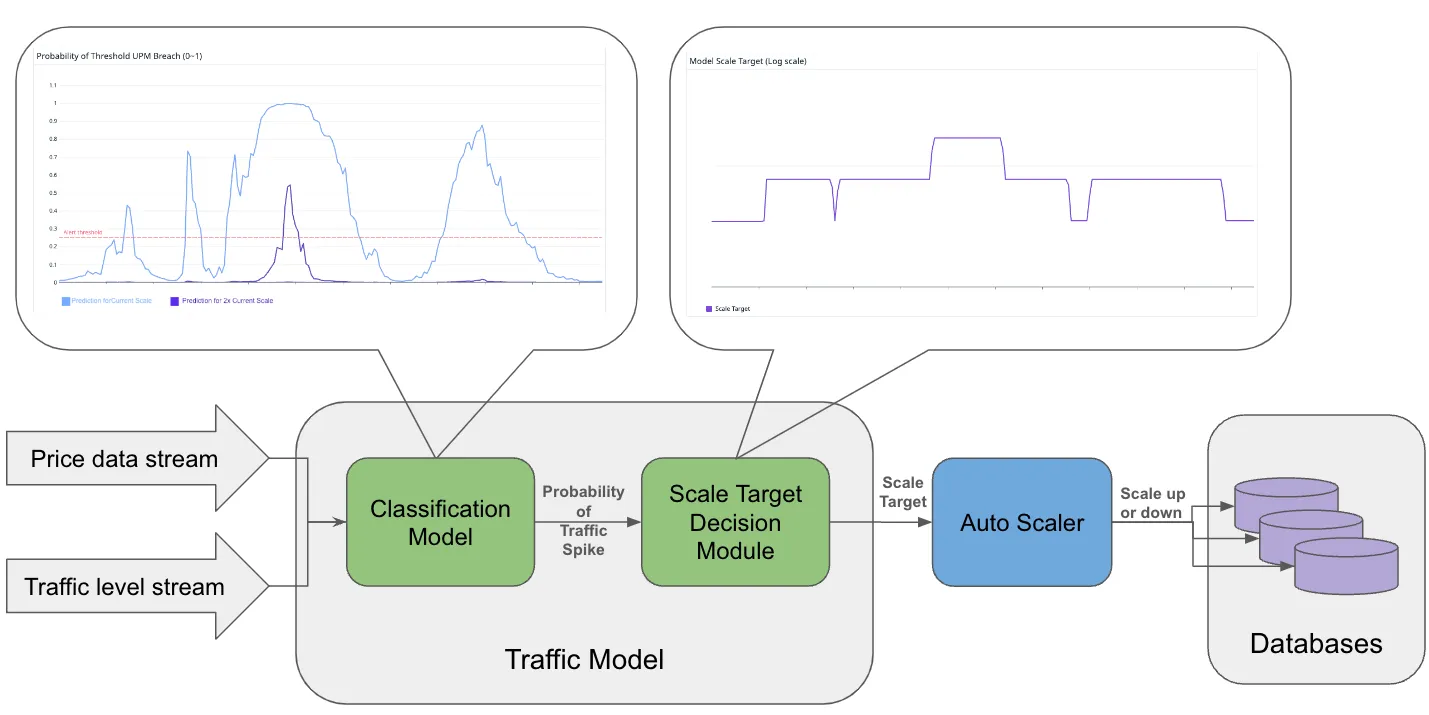Coinbase said on Monday that it has developed and deployed a machine learning model that predicts spikes in user traffic and automatically scales its resources, preventing downtime and increasing platform efficiency. The AI solution aims to deal with the problem of platform crashes during unpredictable traffic surges that have plagued the platform during volatile market conditions.
“Starting to scale when traffic is already high is often too late,” the blog explains. “We developed an automatic scaling solution that uses machine learning to predict the traffic spikes and trigger a scale up before the traffic arrives.”
The exchange says the model has already proven its worth during recent volatile market periods.
“As traffic increased so did our scale target, doubling twice a few hours before peak traffic,” Coinbase wrote. “The model continued scaling up and down with the daily usage pattern, until volatility decreased and there was no longer a need to scale up.”

The model’s task is to provide a signal with 60 minutes lead time before a traffic spike. Coinbase previously tried a time-series forecasting model that attempted to predict traffic levels 60 minutes into the future. However, this approach was found to be ineffective due to the lag time in the underlying statistics.
Instead, Coinbase transformed the problem into a longer-term classification one. The new model leverages external signals such as price fluctuations in major cryptocurrencies like Bitcoin and Ethereum. The model tries to answer the question of whether traffic will exceed a certain threshold level in the next few hours. This approach has significantly improved accuracy.
“The key insight: if cryptocurrency price volatility is high and the current traffic is approaching the target level at a faster rate than anticipated, then the likelihood of a traffic spike is increased,” the blog states.
Coinbase explains that its AI model was designed to balance between avoiding missed spikes and reducing false alerts. This is an important step because triggering false alerts may result in wasted resources whereas too much reduction of false alerts may end up with an inaccurate model that does not serve its purpose —and the exchange crashing during high traffic periods as a direct consequence.
Coinbase’s history with market volatility is not a pretty one. The exchange is known for its instances of outages and technical issues during key moments of crypto history.
For example, on May 14, 2024, Coinbase experienced a major outage that lasted more than three hours, affecting both desktop and mobile platforms. Users encountered a ‘503 service temporarily unavailable’ message on the website and incorrect ‘planned maintenance‘ notifications on the mobile app.
Just two months before that, when Bitcoin was on its way to reaching its ATH, the exchange crashed, leaving thousands unable to realize their gains. “We are encouraged by the excitement in the market and are continuing to double down the capacity and resilience of our systems,” a Coinbase spokesperson told Decrypt back then.
And one month before that Coinbase crashed due to its inability to handle the unexpected traffic during a bull run.
We are dealing with a LARGE surge of traffic – apologies for any issues you encounter. The team is working to remediate.
— Brian Armstrong (@brian_armstrong) February 28, 2024
Users have also reported financial losses due to the inability to execute trades during these outages, with Coinbase not able to recommend anything else besides refreshing the site until things are back to normal.
I’m sorry to hear that you’re having trouble selling. Our team is actively working towards a resolution. While we can’t provide a specific timeline for the fix, we suggest that you keep checking your account for updates. 1/2
— Coinbase Support (@CoinbaseSupport) May 14, 2024
Coinbase has continuously said it has taken steps to resolve past issues. Technical upgrades and infrastructure improvements have been a primary focus. The company has invested in enhancing its server capacity and optimizing its software architecture to better handle high traffic volumes.
But considering the problems are caused by traffic spikes and not by a steady traffic growth, the use of AI to predict unusual traffic and automatically scale databases seems to be the most optimal approach—if proven effective.
Now, we just need to wait until the next price swing to see whether this AI algorithm can beat a flood of crypto traders.
Generally Intelligent Newsletter
A weekly AI journey narrated by Gen, a generative AI model.




